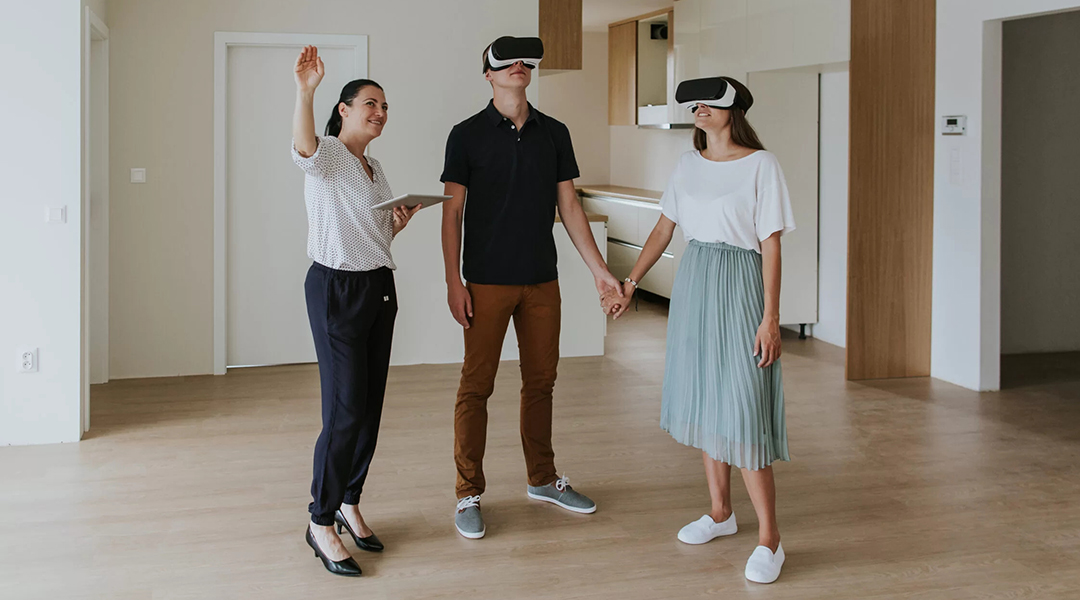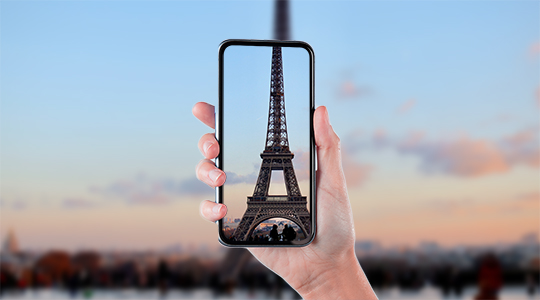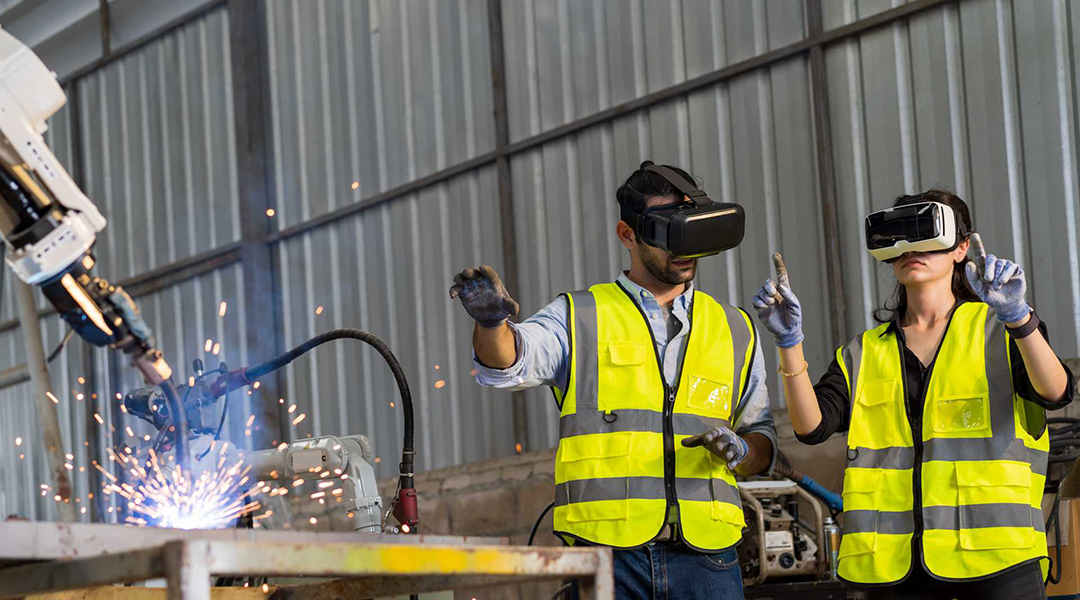Nowadays, the landscape of real estate is undergoing a significant transformation, driven by the evolving preferences of millennials and Generation Z. These younger generations, now emerging as the primary demographic in the real estate market, bring with them a distinct set of expectations shaped by their deep connection with digital technology. This shift is not just a trend but a new reality that the real estate industry must adapt to. A compelling testament to this change is that a virtual tour is particularly influential among customers aged 18 to 34, who are 130% more likely to book a viewing or decide based on a virtual tour. This statistic underscores the growing importance of integrating digital solutions into real estate marketing strategies.
A virtual tour represents more than just a novel way of showcasing real estate properties; they are becoming a fundamental element in the decision-making process of the modern real estate customer. These immersive experiences cater to the digital-savvy generation, offering convenience, detailed insights, and a sense of control that traditional methods cannot match. A virtual tour is essential for engaging potential buyers and renters in an era where time is precious and instant access is valued.
How to make a virtual tour? Program-Ace, a VR app development services leader, has prepared this article to help you find the answer to this question. Our specialists have written down the main insights they gathered while creating VR experiences. Dive in to learn the details!
What is a Virtual Tour in Real Estate?
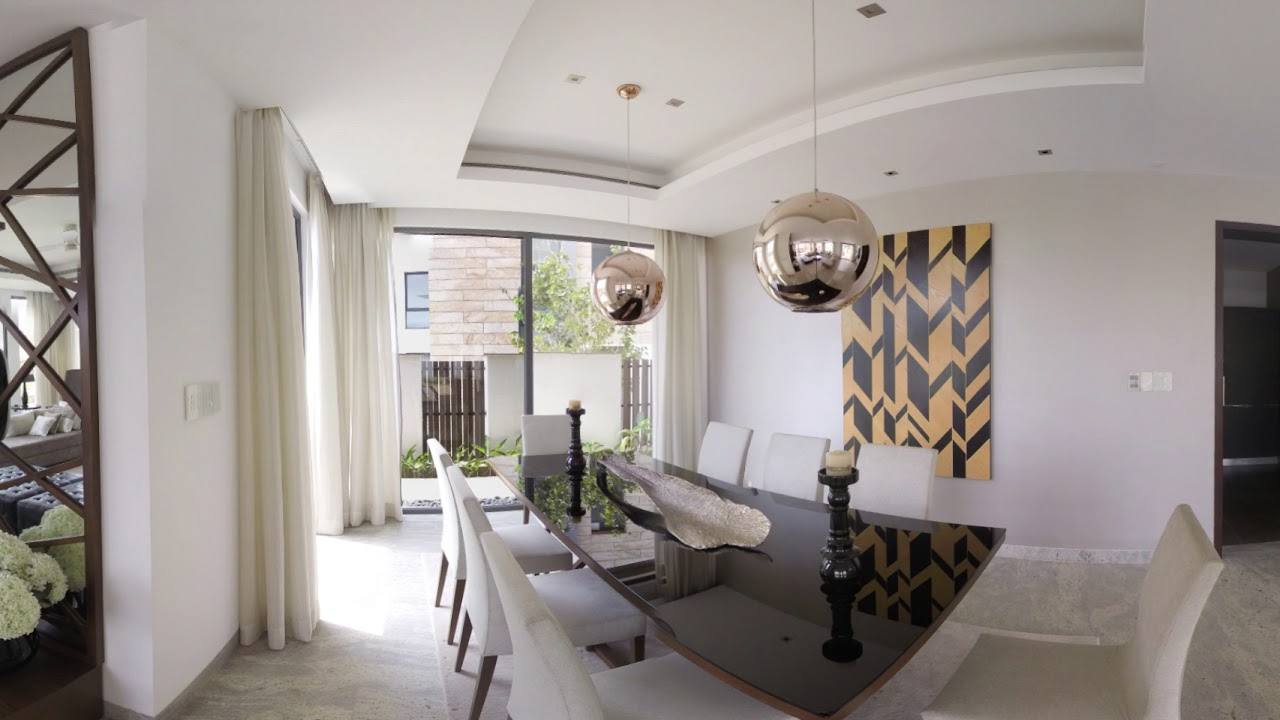
In modern real estate, a virtual tour is an innovative and immersive way to showcase a property. It's a digital creation that allows potential buyers or renters to explore a property online as if they were walking through it in person. This technology combines high-quality photography, 360-degree video, and sometimes virtual or augmented reality to create a comprehensive and interactive experience.
Unlike traditional static images, a virtual tour provides a dynamic and engaging view of a real estate property. Viewers can navigate through different rooms and spaces, look around in every direction, and sometimes interact with elements within the tour, such as clicking on features to learn more about them. This interactive journey can be accessed from a computer, smartphone, or a VR headset for a more immersive experience.
A virtual tour is a powerful tool for real estate, offering a realistic, detailed view of a real estate property. They allow potential buyers or tenants to visualize the property's space, layout, and feel remotely, which is particularly useful for those who cannot visit in person. This digital approach aligns perfectly with the expectations of a generation that values convenience, efficiency, and technological innovation in all aspects of their lives, including real estate property hunting.
In essence, a virtual tour in real estate is more than just a digital walkthrough; it's an innovative, engaging, and effective way to present properties that resonate with today's tech-savvy buyers and renters. It represents a significant leap from traditional marketing methods, offering a glimpse into the future of real estate showcasing.
Types of Digital Real Estate Tours
Are you looking to showcase your real estate property in a way that captures every angle and detail? Do you want potential buyers to experience the layout and feel of your property from the comfort of their homes? Or perhaps you're interested in providing an immersive experience that allows for interactive exploration? The versatility of virtual real estate tours can cater to all these needs and more. Let's delve into the virtual tours available in the real estate market, each offering unique benefits to sellers and buyers.
- 360-Degree Virtual Tour
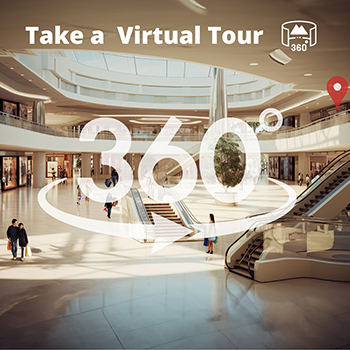
This virtual tour uses panoramic photography to create a full 360-degree view of each room or space in a property.
Benefit: It provides a comprehensive visual experience, giving viewers a panorama view and a realistic sense of the space.
- Interactive 3D Walkthrough
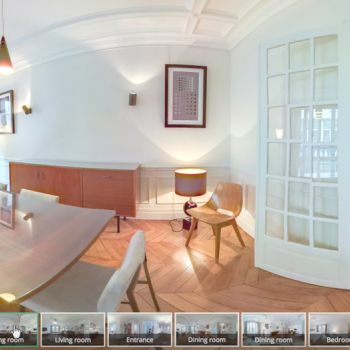
More advanced than 360-degree tours, these allow users to virtually 'walk' through a property, navigating from room to room at their own pace.
Benefit: They offer a highly interactive and detailed view of the real estate property, enhancing user engagement.
- Dollhouse View
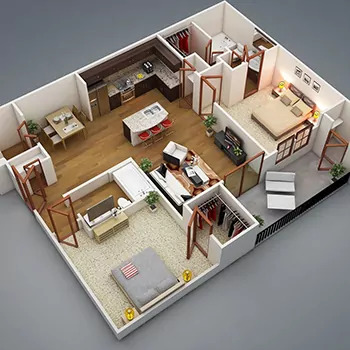
This type of virtual tour showcases a 3D model of the property that can be viewed from various angles, much like a dollhouse.
Benefit: It provides an excellent overview of the property's layout and structure, helping buyers understand the flow of the space.
- Virtual Staging Tour
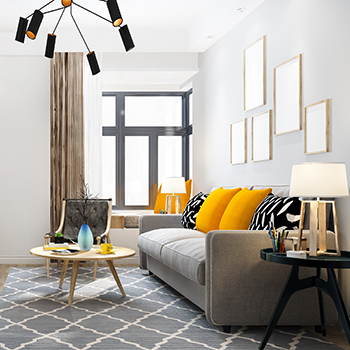
Ideal for empty spaces, this virtual tour uses digital furnishings and decor to stage the property virtually.
Benefit: It helps potential buyers visualize the property as a home and see the potential of empty spaces.
- Video Walkthrough
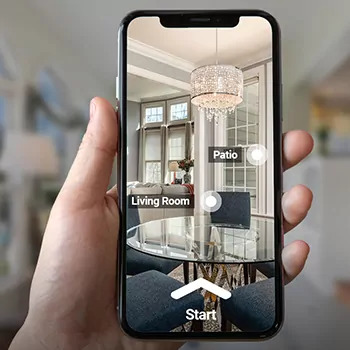
These are guided video tours where a camera is walked through the property, often accompanied by a narrator.
Benefit: They provide a realistic and personal view of the property, ideal for those who prefer a more traditional approach.
- Augmented Reality (AR) Tour

AR tours overlay digital information onto real-world property views, accessible through smartphones or AR glasses.
Benefit: They offer an interactive and informative experience, allowing users to visualize real-time changes and features.
- Virtual Reality (VR) Tour
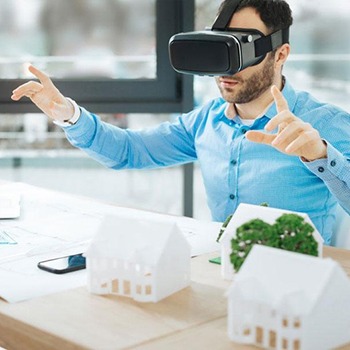
These fully immersive tours use VR headsets to give users a realistic experience of walking through the real estate property.
Benefit: They provide an incredibly lifelike sense of the property, ideal for remote buyers.
- Floor Plan Tour
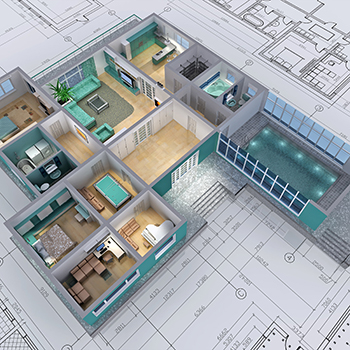
Combining traditional floor plans with interactive elements, these tours allow users to click on different parts of the plan to see images or 360-degree views.
Benefit: They are great for understanding the layout and size of the property in a clear, concise manner.
- Live Virtual Tour
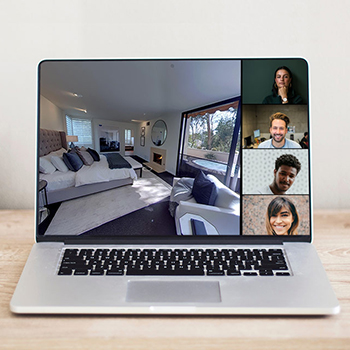
Conducted in real-time, this virtual tour is led by an agent via a video call, allowing potential buyers to request to see different parts of the property.
Benefit: It offers a personalized and interactive experience, with the flexibility to focus on areas of interest.
- Neighborhood and Aerial Tour
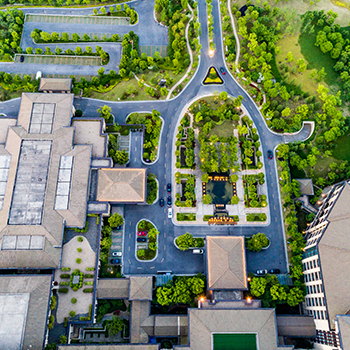
This virtual tour uses drone technology to view the property and its surroundings.
Benefit: It gives real estate buyers a sense of the neighborhood, nearby amenities, and the property's location and context.
Why Do You Need a Real Estate Virtual Tour?
A real estate virtual tour is not just a flashy addition to property listings; it serves many practical purposes that cater to various needs in the real estate market. Here's a list of use cases that highlight why a virtual tour is an indispensable tool in modern real estate:
Pre-Screening for Potential Buyers
A virtual tour allows potential buyers to thoroughly explore properties online before deciding to visit in person. This pre-screening process saves time for both buyers and agents by focusing on properties that meet the buyers' criteria.
Attracting Long-Distance Buyers
A virtual tour is invaluable for buyers relocating from a different city or country. They provide a realistic view of the property, making it easier for these buyers to shortlist homes without the need for frequent travel.
Showcasing Unbuilt Properties
For new developments or properties under construction, a virtual tour can offer a glimpse into the future by using 3D renderings to show what the finished space will look like, aiding buyers in visualizing the property's potential.
Enhancing Online Listings
A virtual tour can make listings stand out in an era where most property searches begin online. They provide an interactive and detailed view of the real estate property, making the listing more engaging and attractive to potential buyers.
Marketing Rental Properties
A virtual tour is not just for properties for sale but also incredibly effective for rental properties. They allow prospective tenants to explore the property remotely, increasing rental chances.
Historical Documentation
For real estate property owners, a virtual tour can serve as a detailed record of their property's condition at a specific time, which can be useful for insurance purposes or future renovations.
Interactive Open Houses
A virtual tour can be used to conduct interactive open houses, where multiple online visitors can explore the real estate simultaneously, broadening the reach and efficiency of traditional open houses.
Interior Design and Renovation Planning
A virtual tour can assist interior designers and homeowners in planning renovations or interior decorations. By providing a detailed view of the space, they help make informed decisions about design changes.
How to Make a Virtual Tour for Real Estate in 7 Steps
Step 1: Plan Your Tour
Creating a virtual tour for real estate begins with meticulous planning, a stage crucial for determining the project's effectiveness and appeal. Start by defining the tour's objective, whether for a residential, commercial, or rental property, as this will guide the style and features to highlight. Identify key property features to capture, such as layout, room designs, architectural elements, and finishes, ensuring these highlights are showcased effectively.
Consider the lighting, aiming to shoot in natural light for enhanced visual appeal. Plan the tour's flow to reflect a natural movement through the real estate property, from the entrance through main areas to outdoor spaces, providing a comprehensive experience.
Prepare the property by cleaning, decluttering, and staging, possibly using virtual staging in post-production for added appeal. Choose appropriate equipment and software for capturing and creating the virtual tour, like a 360-degree camera or DSLR, and software for image stitching and interactive elements.
Finally, ensure you have the necessary permissions for photography and public display, particularly if capturing neighboring areas or using drones.
Step 2: Capture High-Quality Images or Videos
Once the planning phase is complete, the next step in creating a virtual tour for real estate is to capture high-quality images or videos. This step is critical as the visual content forms the core of your virtual tour, and its quality will significantly impact the viewer's experience.
Start by selecting the right equipment. For high-quality images, a professional DSLR camera is often recommended. However, for 360-degree tours, specialized cameras that can capture panoramic images are essential. Ensure your camera settings are optimized for each room's lighting conditions and space to capture clear, well-lit images.
If you're shooting video, consider using a stabilizer or gimbal to ensure smooth footage as you move through the real estate property. This is particularly important to avoid shaky or unstable videos, which can detract from the viewer's experience of your virtual tour.
Pay attention to the composition of each shot. Whether you're capturing still images or video, the composition should highlight the space's best features while providing a realistic and comprehensive view. Ensure each room is well-lit, with natural light or additional lighting equipment, to avoid dark or shadowy areas in the footage.
For 360-degree images, capturing a full view of each room or space is essential. This means taking multiple shots from different angles and ensuring that each room section is covered. The goal is to give viewers a complete and uninterrupted experience as they navigate the virtual tour.
In addition to the interior, don't forget to capture the real estate property's exterior, including the front and back yards, gardens, patios, or any other outdoor features. These areas are often key selling points and should be presented in your virtual tour with the same level of detail and quality as the interior.
Once you have captured all the necessary footage, the next step is to review and select the best images or clips. This selection should be based on clarity, lighting, and how well they represent the space. Remember, the goal is to create a virtual tour that is both visually appealing and informative, providing potential buyers or renters with a detailed and realistic view of the real estate property.
Step 3: Choose the Right Software
After capturing high-quality images or videos, the next critical step in creating a virtual tour for real estate is selecting the appropriate software. The right software will stitch your images or videos together and enhance the overall quality of the virtual tour, making it more interactive and user-friendly.
When choosing software for your virtual tour, consider the following factors:
Compatibility: Ensure that the software is compatible with the file formats of your images or videos. It should seamlessly integrate your captured media- high-resolution photos, 360-degree images, or video clips.
User Interface: Look for software with an intuitive and user-friendly interface. It should be easy to navigate and use, even for those who may not have advanced technical skills. A good interface will make creating your tour more efficient and less time-consuming.
Editing Features: The software for a virtual tour should offer robust editing tools. This includes stitching images together smoothly, adjusting lighting and color, and adding interactive elements like hotspots, which can provide more information or link to different rooms or views within the tour.
Customization Options: The ability to customize your tour is crucial. The software should allow you to add branding elements, such as logos or contact information, and customize the design to match the real estate property's style or your company's branding.
Output Quality: Consider the quality of the final output. The software should be capable of producing high-resolution tours that are visually appealing and run smoothly without technical glitches.
Hosting and Sharing Capabilities: Check if the software offers solutions for hosting the virtual tour and how easily the tour can be shared. Ideally, it should allow you to embed the tour on your website or share it through social media and email.
Support and Tutorials: Good software should have reliable customer support and resources like tutorials or help guides. This is especially important if you encounter any issues or have questions during the creation process.
Cost: Finally, consider the cost of the software for a virtual tour. Free and paid options are available, and your choice may depend on your budget and the complexity of the tours you intend to create.
Choosing the right software for a virtual tour balances functionality, ease of use, output quality, and cost. Take the time to research and possibly test different software options to find the one that best suits your needs. This step is crucial as it directly influences the efficiency of your workflow and the quality of the final virtual tour, ultimately impacting the viewer's experience.
Step 4: Edit and Enhance
Editing and enhancing are crucial in making your virtual tour come alive. After importing your images or videos into the chosen software, the first task is to stitch them together seamlessly, especially for 360-degree views, ensuring smooth transitions between different spaces.
The focus then shifts to fine-tuning the visuals. Adjust lighting and color balance across all images or videos for consistency, creating a realistic and inviting atmosphere. This uniformity is essential in presenting the real estate property in the best possible light.
Interactive elements are next on the agenda for your virtual tour. Incorporate hotspots for additional information or to navigate between rooms, enhancing the tour's engagement level and providing valuable insights into the property.
Branding elements like logos and contact information can also be added to your virtual tour during this phase, aligning the tour with your business identity. Remember, the virtual tour is not just showcasing a real estate property but also your brand.
User experience is paramount. The virtual tour should be intuitive, easy to navigate, and optimized for smooth functioning across various devices, ensuring a seamless experience for all potential viewers.
This editing and enhancing phase transforms your raw footage into an immersive, informative, and engaging virtual tour, keeping aesthetics and user experience at the forefront.
Step 5: Integrate Interactive Elements
Integrating interactive elements into your virtual tour is a step that elevates the user experience from simply viewing to engaging. This stage involves embedding features that make the tour a visual journey and an interactive property exploration.
The integration of hotspots is a key aspect of a virtual tour. These are interactive markers that viewers can click on to access additional information, such as close-up photos, text descriptions, or even video clips. For instance, a hotspot in the kitchen could reveal details about the appliances, or one in the living room could showcase the materials used in the flooring. This layer of interactivity enriches the experience, providing depth and context to the real estate property being showcased.
Another interactive element to consider is the inclusion of floor plans or maps. These can be integrated to allow users to understand the layout of the property at a glance and select rooms or areas they wish to view directly. It's a feature that adds both functionality and sophistication to the virtual tour.
For a more narrative experience in your virtual tour, integrating audio descriptions or background music can set the tone and mood of the tour. Audio guides can be particularly useful in providing context, sharing stories about the property, or giving instructions on navigating the tour.
If the real estate property has unique features like a garden, pool, or special architectural elements, consider using multimedia elements like slideshows or videos within the tour to highlight these features. This approach draws attention to these details and adds a dynamic layer to the virtual tour.
Virtual reality (VR) integration is another frontier. If your audience can access VR headsets, offering a VR-compatible tour can provide an incredibly immersive experience, making them feel like they are walking through the real estate property.
Integrating interactive elements aims to create a virtual tour that is seen and experienced. It's about making the tour as informative, engaging, and user-friendly as possible, ensuring viewers have all the necessary information and a memorable experience that sets your real estate property apart.
Step 6: Test and Optimize
Testing and optimizing your virtual tour is essential to ensure it functions smoothly across various devices and platforms. Start by thoroughly testing the tour, checking every interactive element, and observing the transitions and loading times. It's important to experience the tour as a first-time viewer to identify any potential issues.
Cross-platform testing is crucial. Ensure the tour works well on devices like desktops, tablets, and smartphones. This ensures a consistent and quality experience for all users, regardless of their device.
Gathering feedback on your virtual tour is also a key part of this step. Share the tour with colleagues or a test group to get fresh perspectives. They might spot issues you've overlooked or suggest improvements.
Based on the feedback and your observations, optimize the tour. This could involve compressing images and videos for faster loading, tweaking navigation for a better user experience, or adjusting interactive elements for clearer engagement.
Remember also to consider the accessibility of your virtual tour. Making your tour accessible to people with different abilities broadens your audience and reflects positively on your brand.
In summary, testing and optimization are about refining your virtual tour into a seamless, engaging, and accessible experience for every potential real estate viewer.
Step 7: Release and Implement
Releasing and implementing your virtual tour marks its final step, focusing on making the tour accessible to your audience and integrating it into your marketing efforts.
Choose appropriate platforms for release, such as your company's website, real estate listings, social media, and email campaigns, ensuring the tour reaches your target audience effectively. On your website, the tour should be easy to find, ideally on the real estate listing page or a dedicated virtual tour section.
Utilize social media to share snippets or teasers of the tour, and consider targeted advertising to enhance its reach. Email campaigns can also be a powerful tool, sending direct links of the tour to your subscriber list.
After release, monitor the tour's performance using analytics tools to track views, engagement, and click-through rates. This data will help you gauge the tour's effectiveness and identify areas for improvement.
Be prepared to update the tour based on feedback and changing market dynamics, ensuring it remains relevant and appealing.
Essentially, this final step is strategically placing your virtual tour for maximum visibility and impact and continuously refining it based on viewer interaction and feedback.
Discover new places with our virtual tour solutions.
Advantages of Real Estate Virtual Tours
We have answered the question, “how to make a virtual tour?” But let’s do deeper and explore the benefits of incorporating real estate tours into your operations. A real estate virtual tour has become an indispensable tool for property marketing. Their importance cannot be overstated, especially when considering the evolving preferences of modern homebuyers and the competitive nature of the real estate market. Here are key reasons why incorporating a virtual tour into your real estate strategy is essential:
Enhanced Engagement and Immersion: A virtual tour offers an interactive and immersive experience beyond static images or text descriptions. They engage potential buyers more deeply, allowing them to explore properties conveniently and conveniently. This can significantly increase their interest and emotional investment in real estate.
Wider Reach and Accessibility: A virtual tour diminishes geographical barriers. Prospective buyers from anywhere in the world can explore properties without needing physical travel. This global accessibility expands your market reach and attracts a broader audience, including international buyers or those relocating from other regions.
Time and Cost Efficiency: A virtual tour can significantly reduce the number of unnecessary physical showings, saving time and resources for real estate agents and clients. They help filter out those not genuinely interested, ensuring that only serious buyers request in-person viewings.
Increased Convenience for Buyers and Sellers: Buyers appreciate the convenience of exploring properties online before deciding to visit in person. For sellers, a virtual tour means fewer disruptions to their daily lives from physical showings, which is especially beneficial for occupied properties.
Competitive Advantage in the Market: Offering a virtual tour can set your real estate listings apart from those that only provide traditional photos or videos. It demonstrates a commitment to leveraging the latest technology to provide the best possible experience for buyers.
Better Representation of Properties: A virtual tour provides a more accurate and comprehensive property representation than photos alone. They allow potential buyers to understand the space's layout, size, and flow, reducing the chances of disappointment during physical viewings.
Support for Decision-Making: By providing an in-depth view of a real estate property, a virtual tour helps buyers make more informed decisions. They can revisit the virtual tour multiple times, discuss with family or friends, and consider their options without the pressure of a one-time visit.
Enhanced Marketing Material: A virtual tour is not just a tool for individual listings but also powerful marketing material for your brand. They showcase your commitment to providing innovative and customer-friendly services, enhancing your brand image.
A real estate virtual tour is more than just a technological advancement; it responds to changing market dynamics and consumer behaviors. They offer a blend of convenience, efficiency, and immersive experience that today's buyers seek, making them an essential component of modern real estate marketing.
Read about the influence of virtual tours on various modern industries in our whitepaper.
Summing Up: Create a Real Estate Virtual Tour with the Help of Program-Ace
So, how to make a virtual tour? Rather than hiring freelancers or the first specialists you can find in your local market, you can consider partnering with an outsourcing provider to create a virtual tour. While one or two people might do the trick for small projects, a team from a reputable virtual real estate company is recommended when working with large buildings or a sizable collection of homes that should be toured.
Of all the outsourcing companies providing virtual real estate services, Program-Ace brings the most to the table. We have a long history of developing digital real estate solutions (including the aforementioned Room Configurator, FurnitARe, VR Hotel, and others) and a large team ready to handle ambitious and complex projects. This includes developers, project managers, 2D and 3D artists, QA engineers, and even business development experts who can assist with defining and achieving business goals for the project.
When you are ready to discuss the virtual tour you want to create, send us a message. We would love to contribute!

